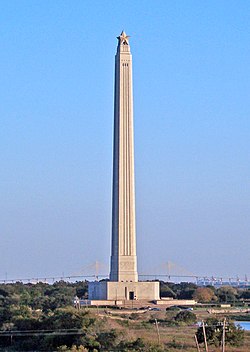According to Wikipedia: It takes a village is a proverb that leverages the cultural context and belief that it takes an entire community to raise a child: A child has the best ability to become a healthy adult if the entire community takes an active role in contributing to the rearing of the child.
I wrote before at this linked phrase about the importance of finding the hometown of our German immigrants. American genealogical sources must be thoroughly researched before attempting to delve into the German church records. It takes the name of a village to find the name of the church.
It also takes a village of genealogists and historians to figure out the name of the village of origin. Case in point is one of my current projects involving a Houston couple, Henry Brenner 1827-1911 and Fredericka Eggert 1828-1901. The historians at the Washington and Glenwood cemeteries in Houston have been integral residents of this village. The tangled web of family trees on Ancestry.com has also provided a number of persons that have this couple in their family trees. Fortunately, one of those trees had a document attached that was prepared by the cemetery historians. This report on the Brenner family was a jump start to the process of sorting out the tangled web.
The full German name for Henry Brenner is thought to be
Heinrich August Brenner. The full German
name for Fredericka Eggert was originally thought to be Marie Friedericke
Eggert. After further examination of the
family trees that had that full name, it appears that they have provided that
name based on a record for a person with a similar name as follows:
name: Marie Friedericke Eggert [possible, but not a strong match;]
gender: Female
baptism/christening
date: 29 Jul 1836
baptism/christening
place: EVANGELISCH,BLASHEIM,WESTFALEN,PRUSSIA
father's
name: Franz Heinrich Eggert
mother's
name: Henriette Cathrine Fincke
indexing
project (batch) number: K98332-5
system
origin: Germany-ODM
source
film number: 1050756
reference
number:
The church burial record[1] is
translated as follows:
Burial
July 22, 1901; Frau Fredericka Brenner nee Egert born 6 Sep 1828 in Steink,
Sachsen [Saxony]; died 21 Jul 1901 from Diarrhea; buried in the German
Cemetery, Houston [Now Washington Cemetery]
 |
| 1901 Church Burial Record from German Lutheran Church, Houston, Texas |
Based on the birth date in this burial record it appears
that many family trees have erred in selecting the name Marie Fredericke and
the birth date from 1836. The record
above is from Westphalia. Fredericka
Eggert was born in the vicinity of the state of Saxony from the burial record
or Mecklenburg from the 1870 census.
The place of birth given in the 1870 census for Fredericka
Eggert Brenner is Mecklenburg, Germany.
 |
| 1870 Census show Fredericka Eggert with her husband Henry Brenner, children Mina and William and other possible relatives in adjacent households. |
Mecklenburg-Vorpommern
is a federated state in northern Germany today. The capital city is Schwerin.
The state was formed through the merger of the historic regions of Mecklenburg
and Vorpommern after the German reunification in 1990. The states of Mecklenburg-Schwerin and
Mecklenburg-Strelitz became Grand Duchies in 1815, and in 1870 they voluntarily
joined the new German Empire, while retaining their own internal autonomy.
 |
| Google Map showing the current state of Mecklenburg-Vorpommen in area highlighted in pink |
The 1901 burial record says that Fredericka Eggert was born in Steink,
Saxony. A review of an online German gazetteer[2]
found no match for Steink. However a
wildcard search yields the following possible matches for Steink as a prefix
for a place name. All of these place names
are in Niedersachsen, Bundesrepublik Deutschland:
Format: -place name -type -Superordinate objects -postal code
–GOVId
·
Steinkamp settlement Seesen, Goslar, D38723;
STEAMP_W3370
·
Steinkamp place Groß Oesingen, Gifhorn,
D29393; STEAMP_W3121
·
Steinkimmen place; Ganderkesee,
Oldenburg, D27777; STEMEN_W2871
·
Steinkirchen municipality; Grünendeich,
Stade, D21720; STEHENJO43TN
·
Steinkrug place Wennigsen (Deister),
Region Hannover, D30974; STERUG_W3001
·
Steinkrug settlement Boffzen, Boffzen,
Holzminden, [no postal code] STERUGJO41QS
·
Steinkuhle settlement Sehnde, Region
Hannover, [no postal code]STEHLEJO42XH
·
Steinkuhle settlement Northeim,
Northeim, D37154; STEHLE_W3410
·
Steinkuhle settlement Bad Münder,
HamelnPyrmont,
Steinkirchen is a municipality near Hamburg as shown on the following
map:
If you would like to join my village of German genealogy researchers or if you need any help with your immigrant ancestors, please contact me.
[1] Title:
GERMAN LUTHERAN CHURCH (FIRST EVANGELICAL, LATER KNOWN AS CENTRAL
CONGREGATIONAL CHURCH) RECORDS, 1851-1966; Church Located in Houston, TX.
Records Include: Marriages From 1874-1966, Baptisms From 1851-1959; 1961-1966,
Burial/Death Registers From 1881-1966, Communion Register From 1851-1948; 1951,
Rosters, Constitution, and Financial. Early Years Records are in German.
Different Types of Records are Separated on Various Places on Roll and are
Arranged by Date. Roll Filmed Upside Down; Microfilm at Clayton Library,
Cabinet 92, Drawer 2; the historians at Glenwood & Washington Cemeteries
have a printed version of this record for ready reference.


















